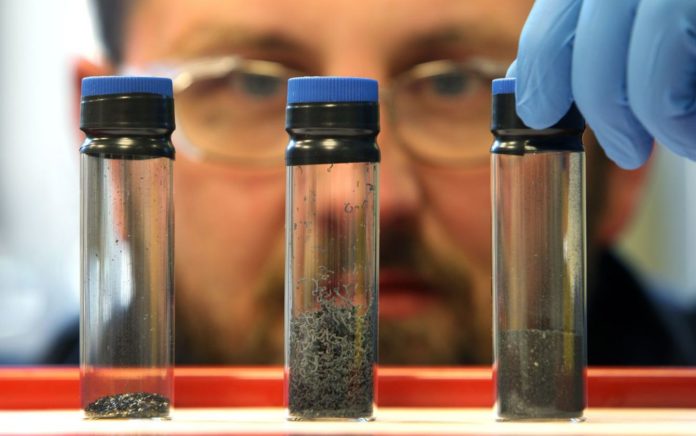The results of the discovery can subsequently be used to create electronic devices and equipment that are resistant to strong magnetic fields.
Scientists from the University of Manchester, led by Nobel laureate Andrei Geim, have discovered a new family of quasiparticles in graphene boron nitride. They were called “Brown-Zak (BZ) fermions”; the results of the study published in Nature Communications.
As a result of the study, scientists were able to clearly align the atomic lattice of the graphene layer with the insulating boron nitride layer, thereby dramatically changing the properties of graphene.
“In a zero magnetic field, electrons move in straight trajectories, and if you attach a magnetic field to them, they will start to move in an arc”
explained Julien Barrier and Piranavan Kumaravadivel, who conducted experiments as part of the study.
“In the graphene layer, which was aligned with boron nitride, the trajectories also begin to bend, but if you set the magnetic field with certain parameters, the particles will again move along rectilinear trajectories, as if the magnetic field no longer exists!”
This behavior of electrons is radically different from theoretical predictions. Scientists associate this phenomenon with the formation of new quasiparticles with high mobility in a strong magnetic field. Until now, the collective behavior of electrons in graphene has been considered in terms of Dirac fermions – quasiparticles with unique properties (for example, lack of mass), which are reproduced in strong magnetic fields. However, this approach did not allow the description of some experimental effects.
The authors of the work propose “Brown – Zak fermions” as a family of quasiparticles that exist in graphene superlattices (crystal lattices with an additional periodic potential) in a strong magnetic field. They can be thought of as collective vibrations of electrons in a graphene layer, which collectively behave like a giant zero-mass particle.
Due to their properties, quasiparticles hardly react to magnetic fields and are able to move in a straight path and under the influence of very strong magnets. “Brown-Zak fermions” kept their path of motion even under the influence of a field with an induction of 16 Tesla – 500 thousand times more than that of the Earth’s magnetic field!
The results of the discovery can subsequently be used to create electronic devices and equipment that are resistant to strong magnetic fields. The researchers suggest that such quasiparticles can actually be observed not only in graphene-boron nitride, but also in other two-dimensional materials.
